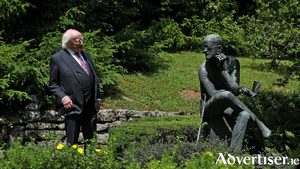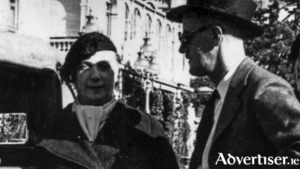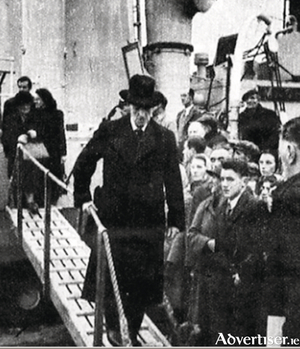Search Results for 'minister for external affairs'
3 results found.
A visit to Fluntern Cemetery

On a late August afternoon my friend John Hill drove me across the city of Zurich, climbing the suburban heights until we stopped at the gates of Fluntern Cemetery. We walked up the last incline to where, among the trees and billard-table lawns, we saw the Joyces’ grave. There was no mistaking it. Just above the grave is the Giacometti-like sculpture of the writer himself, the work of American artist Milton Hebald. There James Joyce sits, in characteristic pose, deep in conversation, head tilted, one leg resting on the other knee, cigarette poised, his slim cane delicately balanced. Someone once remarked that he held his cane like a musical instrument.
The long journey from Bowling Green was over

The Joyces finally arrived in Zurich on 17 December 1940 exhausted after weeks of torturous negotiations with the German, Vichy-French and Swiss authorities. They had sought refuge in Switzerland during World War I, now they hoped to do so again. To add to the stress of it all they had to leave their daughter Lucia behind in a psychiatric hospital in Brittany which was behind German lines. Joyce hoped that once settled in Zurich he could use all the influence he could muster to have her follow them to safety.
The poet and his legend returns home

Kathleen B Curran, who began working for the Galway Harbour Board after she left school, would rise spectacularly through the ranks to become the combined Harbour Master and secretary to the Port Authority (an unheard of position for a woman in Ireland). She was intimately involved in all of the major events which the harbour witnessed during the latter part of the last century. But I am sure she took particular pleasure, as an Irish language enthusiast and a great admirer of the poet WB Yeats, when Galway was picked out to play a role in the great poet’s funeral.

